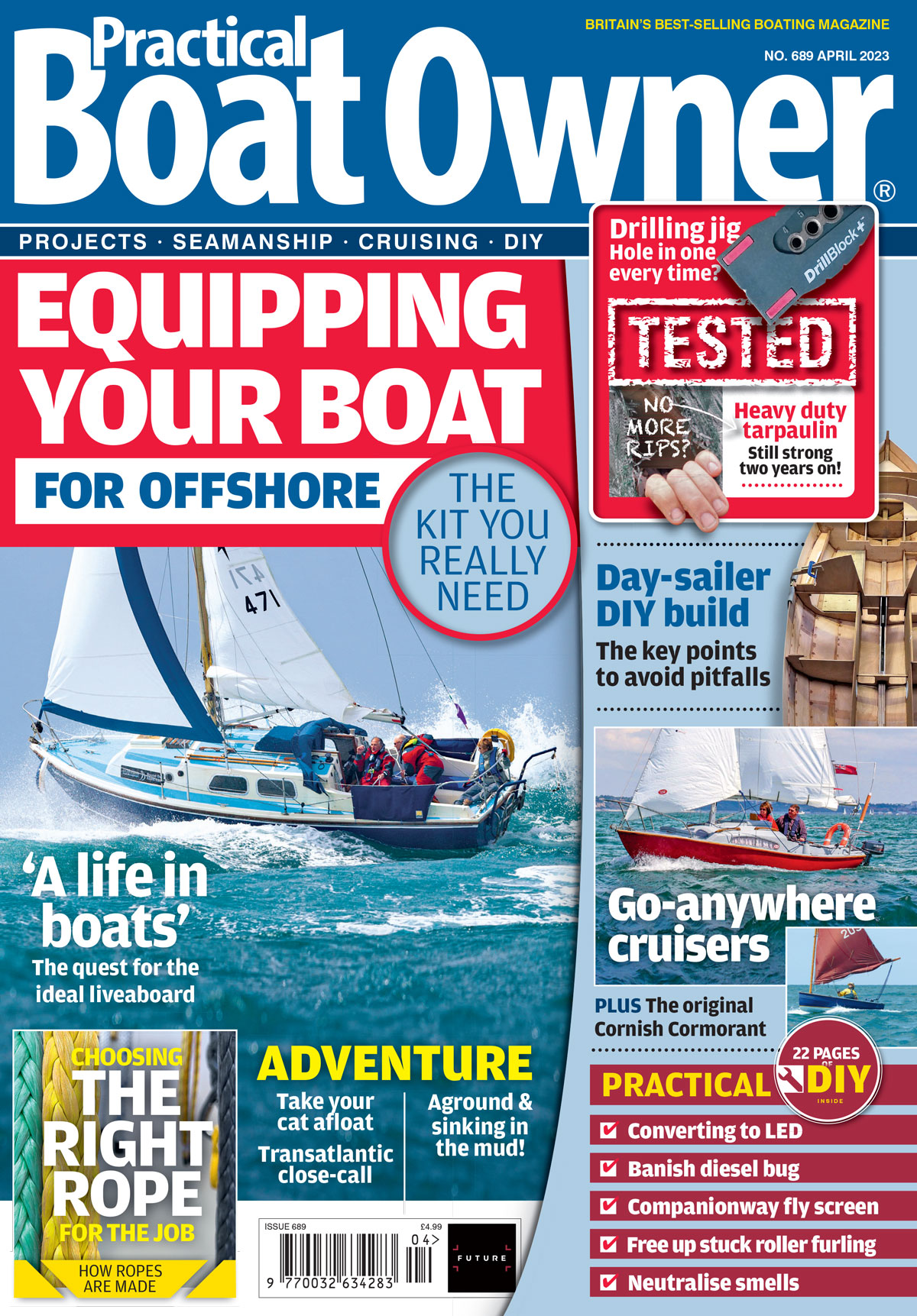David Mead puts a spanner in the works to create a weighty solution for freeing a tangled halyard
Have you ever had a halyard that has gone forward over the spreaders and been trapped around something – in our case usually either be the radar reflector or the mast steaming light – on the front of the mast so it can’t easily be flicked free? Writes David Mead.
It has happened to us several times, usually when the line isn’t tight because we’re not quite ready to raise the main and the wind is from astern.
The problem is that the line can’t be freed off when it is over the spreaders by simply flicking it, yet can be raised and lowered but can’t take the sail up beyond where the line is forward of the track.
My favourite solution, if the line can at least go up and down, is to undo the mainsail end of the halyard and attach a retrieval line and as much weight in as compact a form as possible.

Halyards sometimes get caught on David Mead’s masthead light and radar reflector
The weights need to be as compact as possible to be able to get completely over the spreaders on both occasions forward and backwards without catching, and also heavy enough to overcome the friction of the halyard blocks.
We use a collection of heavy sockets and spanners tied together in a bunch.
Next is to raise the halyard up and over the spreaders, then stop and let the weights swing over and bring the halyard down forward of the spreaders as I release the halyard carefully – we don’t want to break anything on the foredeck with our weights by letting them drop carelessly.
Continues below…
How to: replace a halyard
Halyards need taking out of the mast if you’re unstepping the mast or the line needs replacing. It is pretty…
Protecting halyards over winter
Sam Longley's method to protect and clean his boat's halyards over the winter
How to reef – expert advice from PBO Sail Clinic
How do you ensure an efficient reef with a roller-reefing headsail and slab-reefing mainsail? David Harding explains
Why won’t my boat tack properly?
David Harding offers ideas to help a Kelt 5.50 that won't beat upwind
When it is all down and within reach it is usually fairly easy to flick the line free of the obstacle on the front of the mast.
Once free, the retrieval line and main halyard are pulled until everything is back above the spreaders, then the halyard is released and the retrieval line pulled to bring the halyard and its weights down back over the spreaders when it is reattached to the mainsail and the weights and extra line removed.
Then we can sail on.
Preventing halyard tangling
To prevent this happening in the first case we now maintain tension on the main halyard while the main sail is yet to be raised by using a strong elastic band to hold it down to a convenient cleat situated below the boom.
The idea here is that, when we decide to raise the sail, pulling the halyard hard soon breaks the elastic band which falls away and allows the line and sail to go up.
The only problem is that we need plenty of spare, strong elastic bands.
A more proactive solution would be to fit a line above the spreaders from one stay line across ahead of the mast to the other side one, thus preventing the problem in the first case – but that requires someone who likes climbing masts, and that is definitely not me!
Enjoyed reading this article?
A subscription to Practical Boat Owner magazine costs around 40% less than the cover price.
Print and digital editions are available through Magazines Direct – where you can also find the latest deals.
PBO is packed with information to help you get the most from boat ownership – whether sail or power.
-
-
-
- Take your DIY skills to the next level with trusted advice on boat maintenance and repairs
- Impartial in-depth gear reviews
- Practical cruising tips for making the most of your time afloat
-
-








